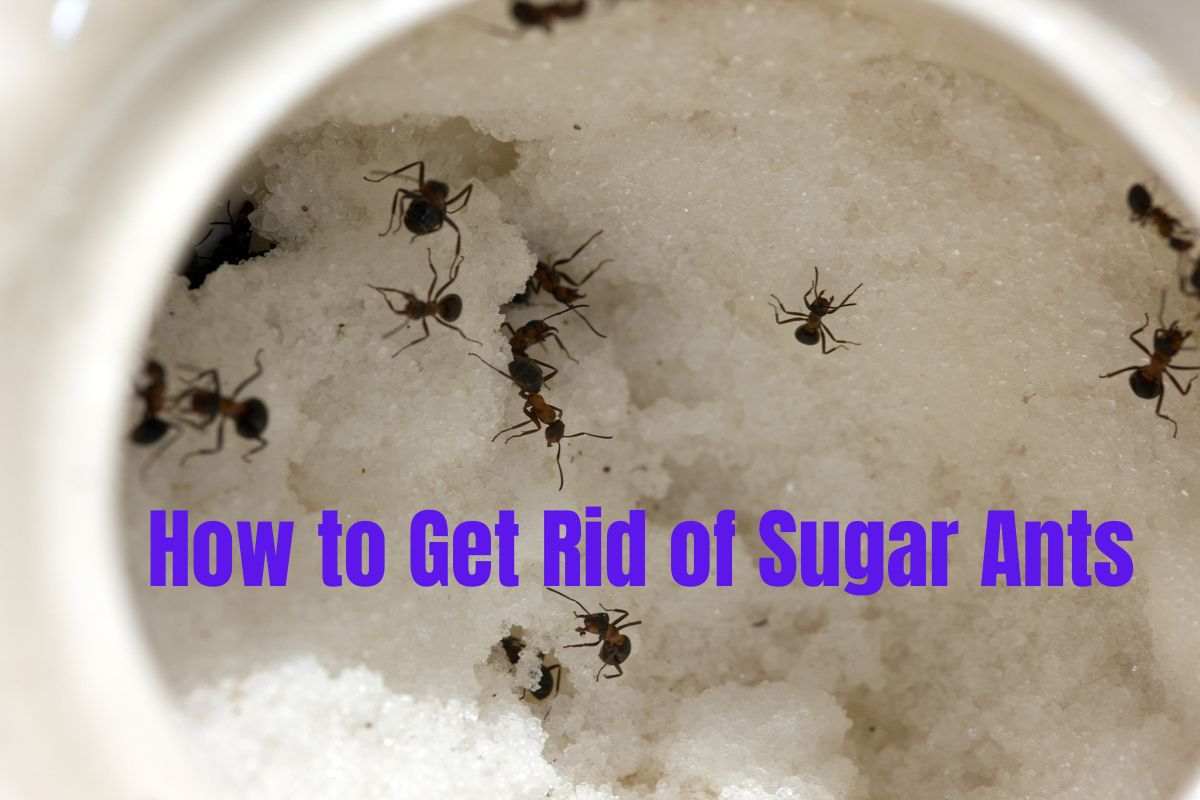Sugar ants and their territories can be tough to get rid of. Regardless, there are numerous cautious ways to remove sugar ants in the house and avoid them from entering the house with the support of natural, nontoxic solutions.
These procedures can also be used to help get rid of other varieties of ants. Sugar ants can be a cause of problems as they are highly problematic to get rid of. These are those species of ants that are fascinated by sugar.
Although these ants aren’t hazardous to humankind they’re extremely irritating. However, if you want to
know how to get rid of sugar ants then worry not as we have some easy ways to get rid of these little demons just by using
Quick Access
How do they look?
There are over 100 varied categories of ants in Australia in the Camponotus family. You can notice these ants in your kitchen, under pebbles and lumber, within open forests and forests. They are generally very tiny, between 2.5 to 18mm long. They have big blackheads, a tiny waist, and a rusty, orange-brown middle.
Depending on the variety, these insects can be as tiny as a grain of rice or as large as a lima bean. Sugar ants vary from yellowish-brown to black with three defined body segments, six limbs, and bent antennae. There are several categories of sugar ants, named ‘alates’, who can glide in the air! Sugar ants can squirt a foul element called formic acid as a form of safety from predators.
There are numerous varied types of sugar ants, each with a little different posture and length. They are commonly very tiny, between 2.5 to 18mm long. Sugar ant soldiers have some impressive-looking pincers on their tops. Up close they can look slightly menacing but it is all for display.
What attracts sugar ants to your house?
Ants explore generally to attempt and discover sources of food. Whenever there’s an unexpected sugar ant infestation, the most plausible reason for it is that there’s food somewhere in your home for them. Largely ants are opportunistic affluents; they’ll consume just about anything.
But they usually choose sweets. Ants are fascinated by a large mixture of food sources that you might have, including:
- Sugar
- Syrup
- Honey
- Fruit juice
- Meat
- Fats
- Breadcrumbs
Once they discover where these food sources are, regions can form long paths of thousands of ants to connect the province to these food sources. They develop a trail using their pheromones to take off a scent mark for different ants. Until this route is wiped out, they’ll keep coming.
Different research has proposed there is a connection between sugar ant infestations and the climate. Infestations appear to be more feasible during times when there have been massive showers or dry, hot, drought-like situations.
However, the most probable justification is that they are either preventing cold, wet situations or have organized a source of moisture in your house during dry, hotter times.
Ants are normally somewhat dormant during winter and in colder situations while coming to be more active during the warmer months of October to March. In cooler portions of Australia, such as Victoria, it’s more familiar for ant infestations to arise during the colder months as ants opt to evaluate their nests indoors.
Where do sugar ants come from?
Unlike humans, insects don’t have any whereabouts and sugar ants are not exceptional! Mostly, sugar ants come from outside your home. But that never means that they cannot originate from your place. Sugar ants can also come from existing nests inside your home. The nests are generally located in undisturbed regions of your house; such as basements, attic, or inside walls.
These insects have about four to five times more odor receptors in comparison to other insects. They can smell food and follow scent trails through every possible opening in your house; from cracks and crevices to vents and narrow passages.
Only one and needs to find an entrance opening. And once after it spots a supply of either food or water, it deposits a pheromone trail—a basic scent trail—by which other ants can reach the region.
How to kill?
There are various ways to kill sugar ants. Below mentioned are some of the most effective natural and chemical methods to get rid of sugar ants in the house.
Chemical-free methods to get rid of sugar ants
Wondering how to get rid of sugar ants as well as
keep a distance from harsh chemicals while treating a sugar ant infestation, try the natural home remedies mentioned below:
Spray the vinegar solution to get rid of the ant trails
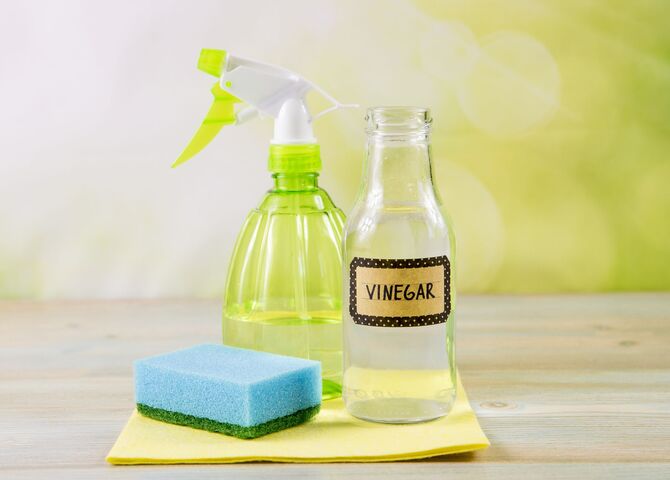
To make the solution, you need a mixture of equal parts of water and vinegar, that said, one part of water and one part of vinegar. Drain the mixture into a spray bottle and it’s ready to use.
After finding the ants’ entry point or the nest, spray along all possible entrance paths to prevent ants from traveling along these routes. Once they have been sprayed, wipe up the dead ants with a paper towel and discard them.
The purpose of using vinegar is that it contains acetic acid, which helps in getting rid of the scent of an ant trail and acts as a deterrent against these pests and helps to control them. To maximize the effect of this home remedy, spray the solution every morning and late afternoon when the ants are most active.
Make a homemade repellent
To make the repellent, mix one part water with a few drops of peppermint or lavender essential oil and pour the solution into a spray bottle. Spray the solution on your kitchen shelves and pantry to prevent the sugar ants from invading the area.
Lay out white cloves or bay leaves
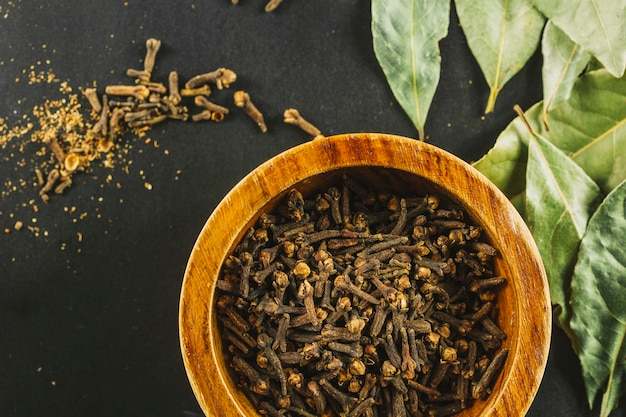
Cloves and bay leave with their strong smell do a wonderful job of repelling sugar ants. Lay out bay leaves under the countertops and whole cloves along the baseboards to deter the ants. This can also serve the purpose of being a sugar ant trap.
Place used coffee ground
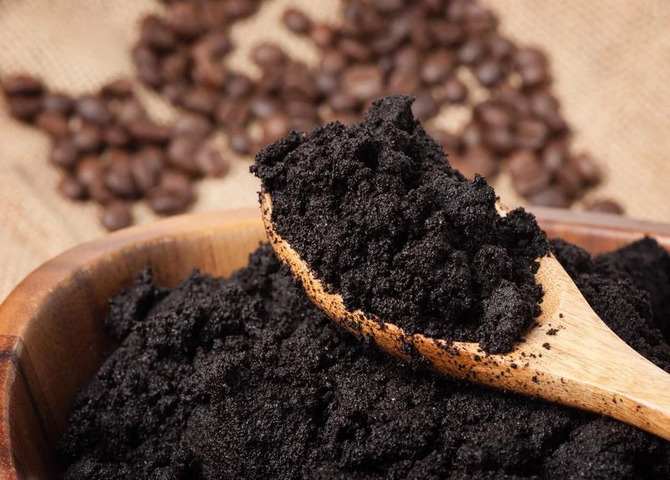
Sugar ants hate the smell and acidity of coffee as it burns them. Spread used coffee grounds around the area where you want to repeal the sugar ants. You can also dust coffee grounds outside your home to prevent sugar ants in the house.
Hang garlic in your pantry
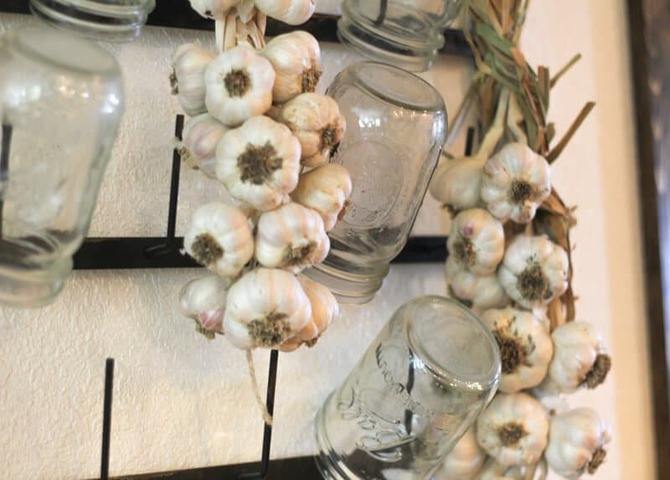
Like cloves and bay leaves, garlic also has a strong smell that irritates the ants and destroys their scent trail. To execute this method tie the garlic with a thin cloth or string and hand them from your door knob of the pantry or attach a hook on the top of shelves.
Make a homemade ant trap

Set out corn syrup or honey on a flat surface. The ants will get attracted to the bath and eventually get stuck in the gooey substance. Once the ants are dead, wipe off the substance and clear the mess from your house.
Chemical methods to get rid of sugar ants

For another best way to get rid of sugar ants try the following chemical remedies. Before trying these techniques, make sure you browse the instructions and take essential protection precautions to keep yourself safe from fatal chemicals.
Also, be sure to keep chemical solutions away from pets and kids. Here are a few chemical procedures to get rid of sugar ants
Diatomaceous earth (silicon dioxide)
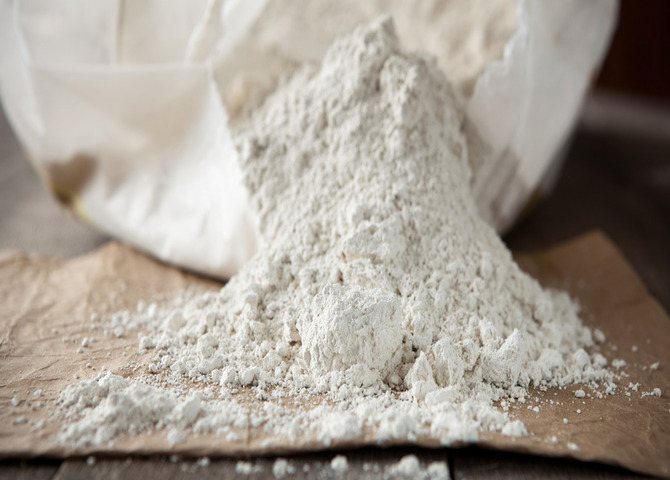
It is a kind of silica made of fossilized residues of underwater organisms named diatoms (a type of plankton). Diatomaceous earth isn’t a toxin.
It eradicates ants and other bugs by consuming the oils in their skeletons, which wipes them out. But since it’s a nuisance, avert breathing in diatomaceous earth or getting it on your skin.
You can get food-grade diatomaceous earth online. To use it to eradicate ants, follow carton directions, or drizzle the powder anywhere you notice ants.
Glass cleaner and fluid detergent
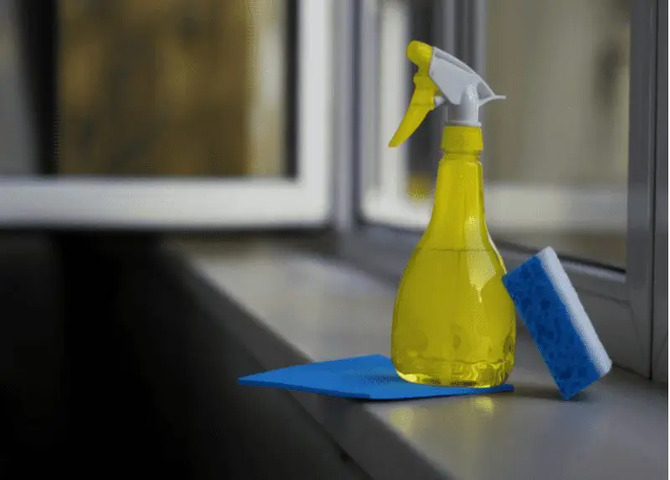
Ants evacuate a fragrant pheromone trail behind them when they step, which works as a map. This procedure can wipe out the odor and prohibit the ants from re-entering your house.
Oil of lemon eucalyptus (OLE)

OLE is different from lemon eucalyptus essential lubricant. It comes from the gum eucalyptus plant, which is aboriginal to Australia. It comprises a chemical called p- Menthane-3,8-diol (PMD), which is a benefit for insect repellent
Set out an ant bait
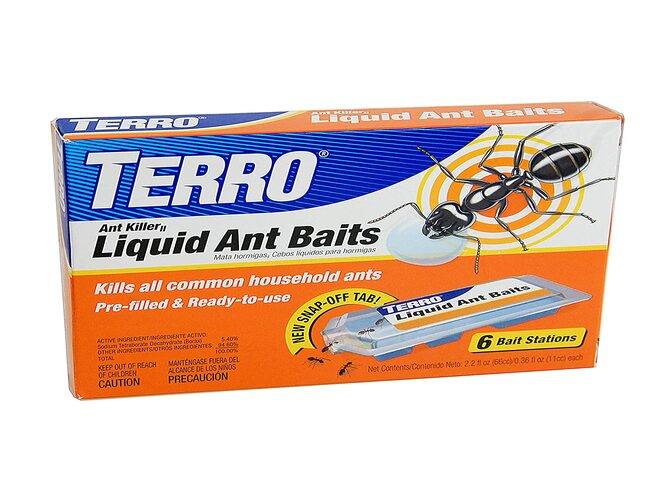
The idea behind using ant baits to get rid of a sugar ant infestation is that the black ants will snatch the bait back to their ant territories as food. Once the other ants have gobbled the lethal bait, they’ll gradually begin to die. Extensively ant baits (sweet baits) will include boric acid or Borax, a slow-acting toxin that annihilates the ants.
Wipe down kitchen countertops with an all-purpose cleaner every night

Not only will this benefit you to clean your kitchen, but it will similarly break down the pheromones that ants use to commemorate each other.
Although there are several DIY preferences you can try, they most probably will not give a long-lasting outcome. Contacting an experienced exterminator is the most helpful and worthwhile choice that ensures long-lasting outcomes. They will be eligible to discover the province and eradicate it at the source.
How do you find and remove sugar ants’ nests?

A sugar ant nest typically resembles a mini volcano, that said, a small mound with a tiny hole on top. If you spot such ant nests outside your home make sure to get rid of them as soon as possible. That way you can prevent them from invading your home.
The following are the best way to get rid of sugar ants:
- Sprinkle some baking soda around the nest as well as on top of the hole.
- Flood the nest with a generous amount of water for straight 15 – 20 mins
- Pour boiling water over the nest
- Dump a mug of bleached water over the nest hole to kill the ant colony
How to prevent them from entering your house?
Below mentioned are some of the prevention methods that will help to keep Sugar ants at bay!
Seal off all opening regions.
Since ants are small, they can discover thousands of thin entrances into your home. Some of them are easy to recognize, but others will only be found out when there’s a parade of ants parading through them. First, figure out where the ants are coming into the house: follow the path of ants to see where they’re coming in, or departing your residence. Plug all the opening holes that you can discover using silicone caulk, putty, glue, or plaster. Temporary techniques might include petroleum jelly or poster nails.
Plug cracks with caulk.
Shut down the voids around windows, entrances, and walls. Block off any area that might enable passage to an ant troop. Your sealing feats will be most helpful if you’re thorough.
Line suspected entrances with anti-ant materials.
This is a fairly more assertive move than simply caulking up the tears. You can build boundaries of chemicals and powders that withstand — even kill— unwitting ants. Ponder diatomaceous earth, salt, and commercial poison. This might benefit as a form of baiting.
Make a tape boundary.
Line your kitchen with sticky tape, sticky-side up. No toxins or messy powders are necessary. When ants begin to climb over the tape, they may stick to the gummy – effectively avoiding them in their paths. Make sure that the ants can’t trudge under the tape; try adopting double-sided tape, or taping the back of the tape to your floors, walls, and counters so that there is no room for ants underneath.
Try creating an obstacle from talcum powder.
Talc in different forms is supposed to prevent ants, although the mechanism is poorly understood. Tailor’s chalk and baby powder usually include talc, so you can use them to build a barrier for ants. However which form of talc do you use: keep in mind that talc has been called out as a potential carcinogen.
Store food in airtight compartments.
Even if you’ve accumulated your food in a cupboard, ants can still discover their path through the tiniest of gaps. If they can inhale it and enter it, then they will invade it. Putting food in airtight containers has the bonus of maintaining the food’s freshness.
Keep the sink clean.
This suggests no dirty plates, no standing water for ants to gulp, and no food in the gutter. If you clean your hands, food, and plates in this sink, you need to make sure that it’s a safe and hygienic environment.
FAQs
1. Are sugar ants hard to get rid of?
Sugar ants and their provinces can be hard to get rid of. Yet, there are numerous safe means to remove sugar ants in the house and avoid them from entering the home with the support of natural, nontoxic remedies that are handily accessible and that don’t put chemicals or toxins into the house and habitat
2. What is the best killer for sugar ants?
White vinegar is an excellent sugar ant killer that
eradicates sugar ants. A solution of vinegar or diluted vinegar (50:50 vinegar and water) can be sprinkled directly over the ants to slay them or into ant holes.Diluted vinegar may also be utilized to tidy up surfaces, including floors and countertops around the home to stave off sugar ants, avoiding them from entering the house.
Ants can still breathe the vinegar even after the vinegar dries and even when humans can no longer sniff it. Vinegar is also a helpful disinfectant and can fend off other insects.
M. D. – Sugar ants can be a cause of problems as they are highly problematic to get rid of. Read this article to know more about How to Get Rid of Sugar Ants.

